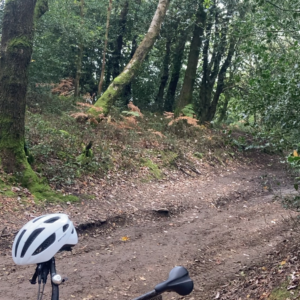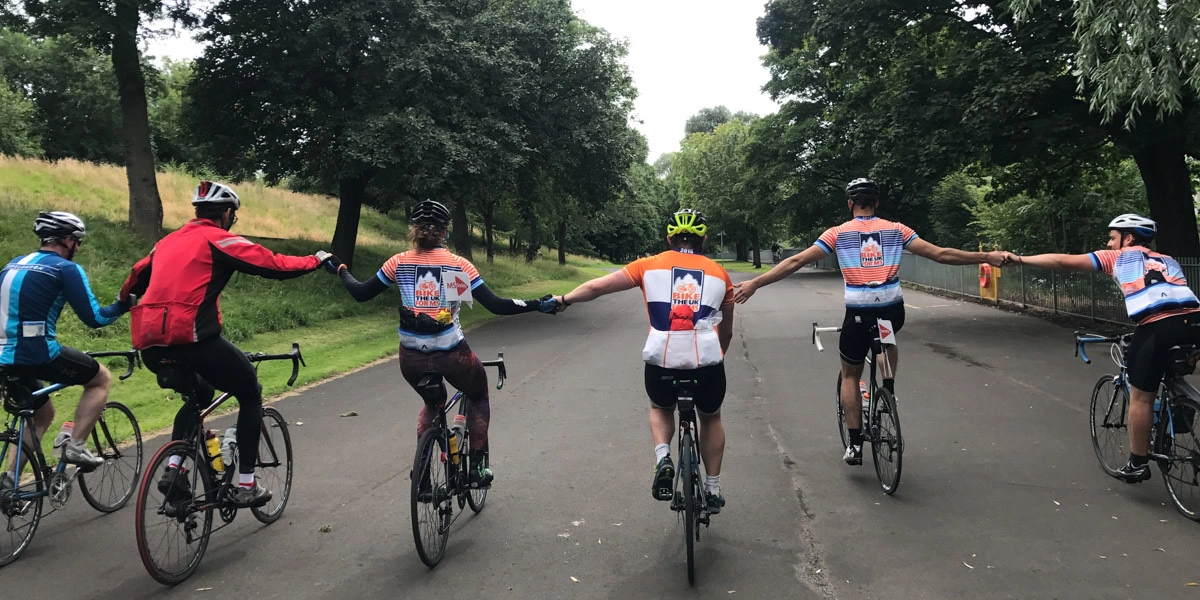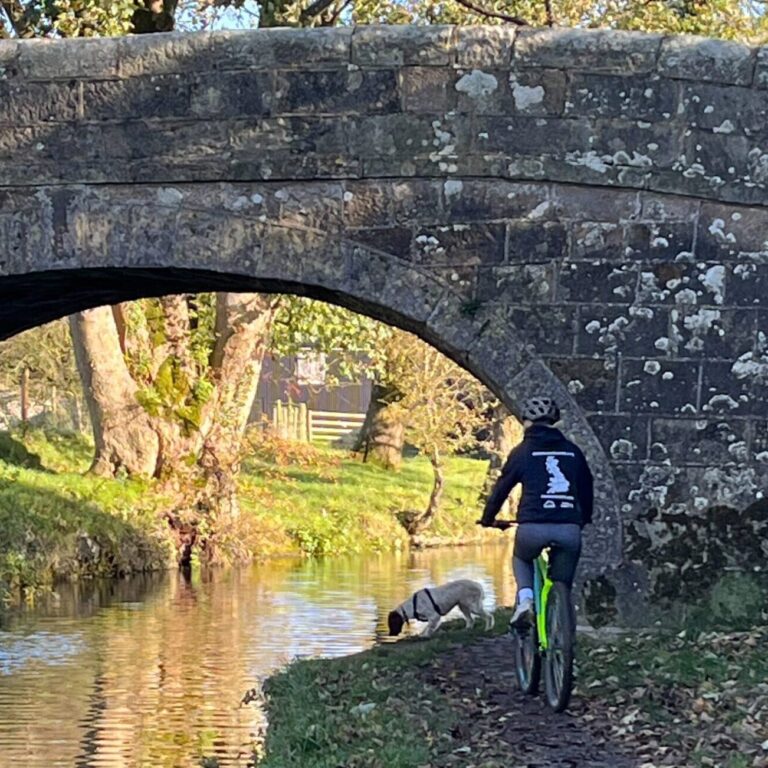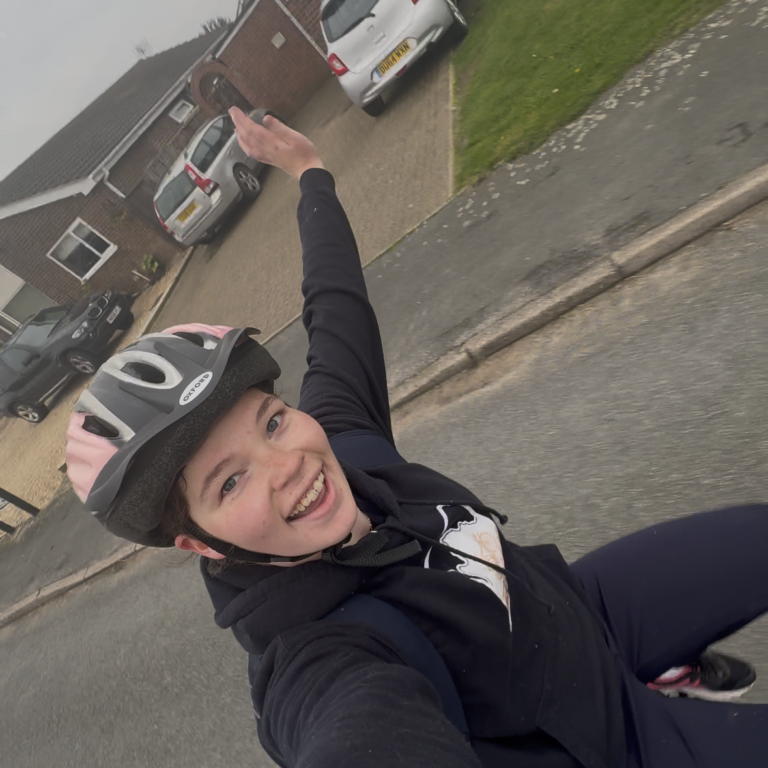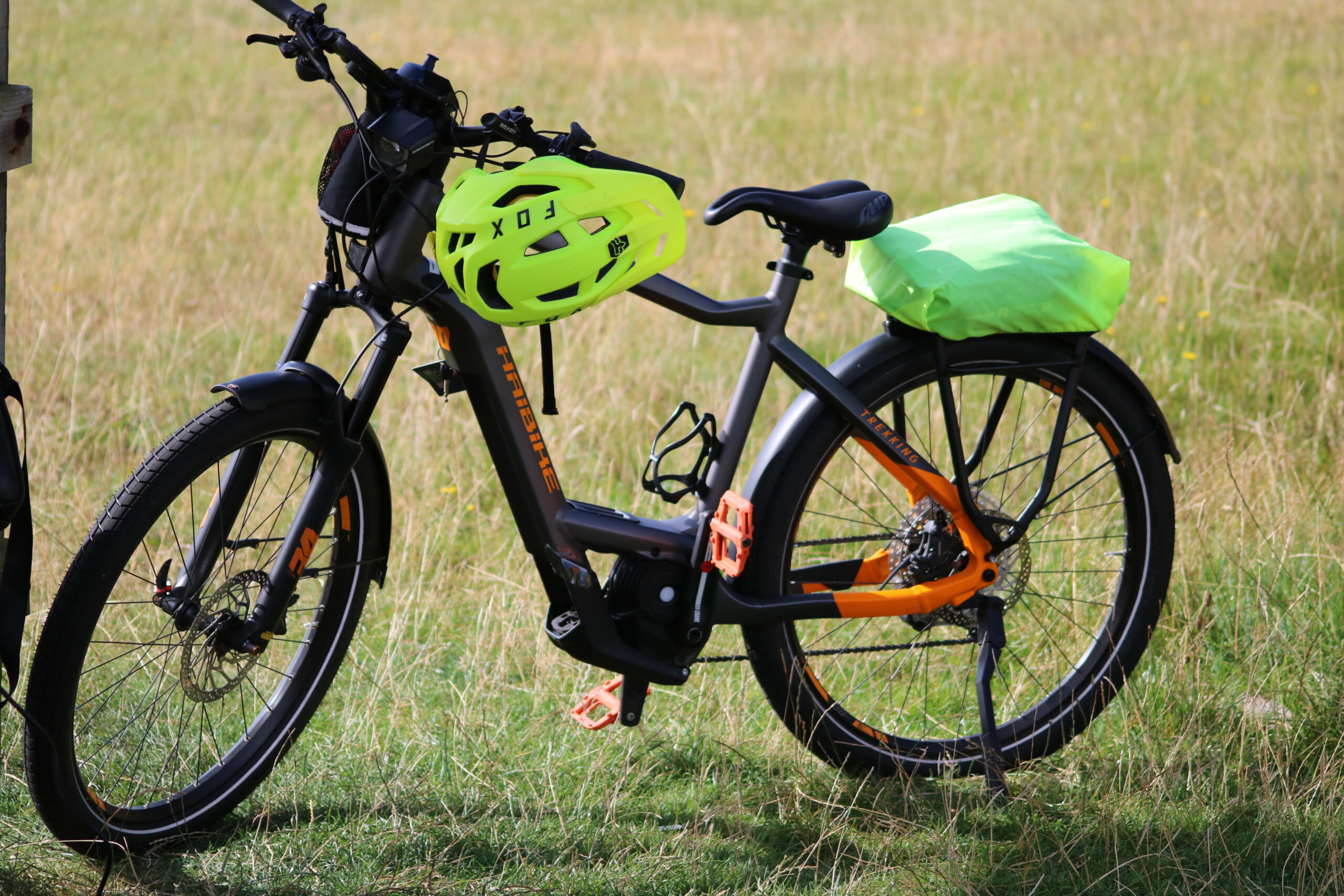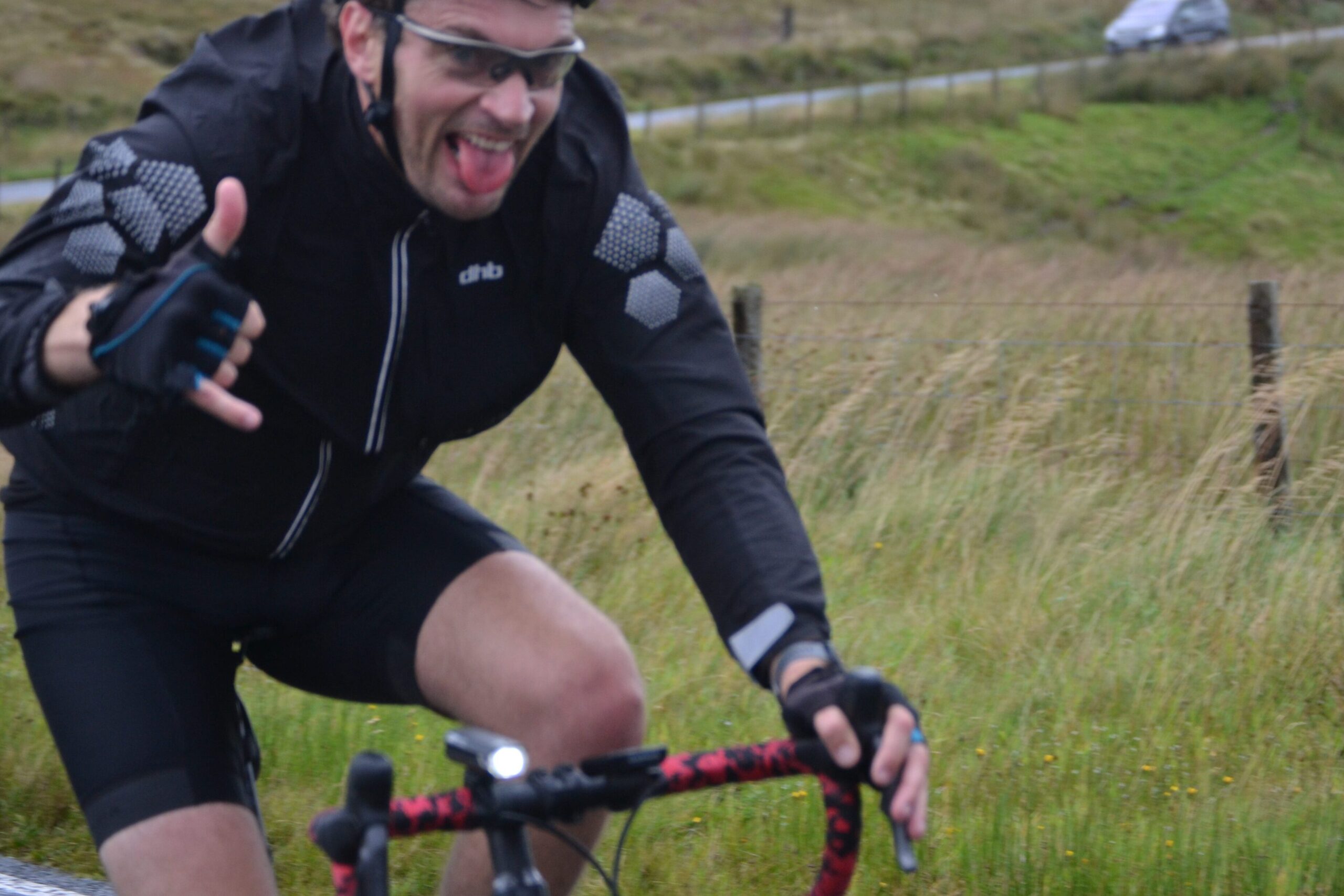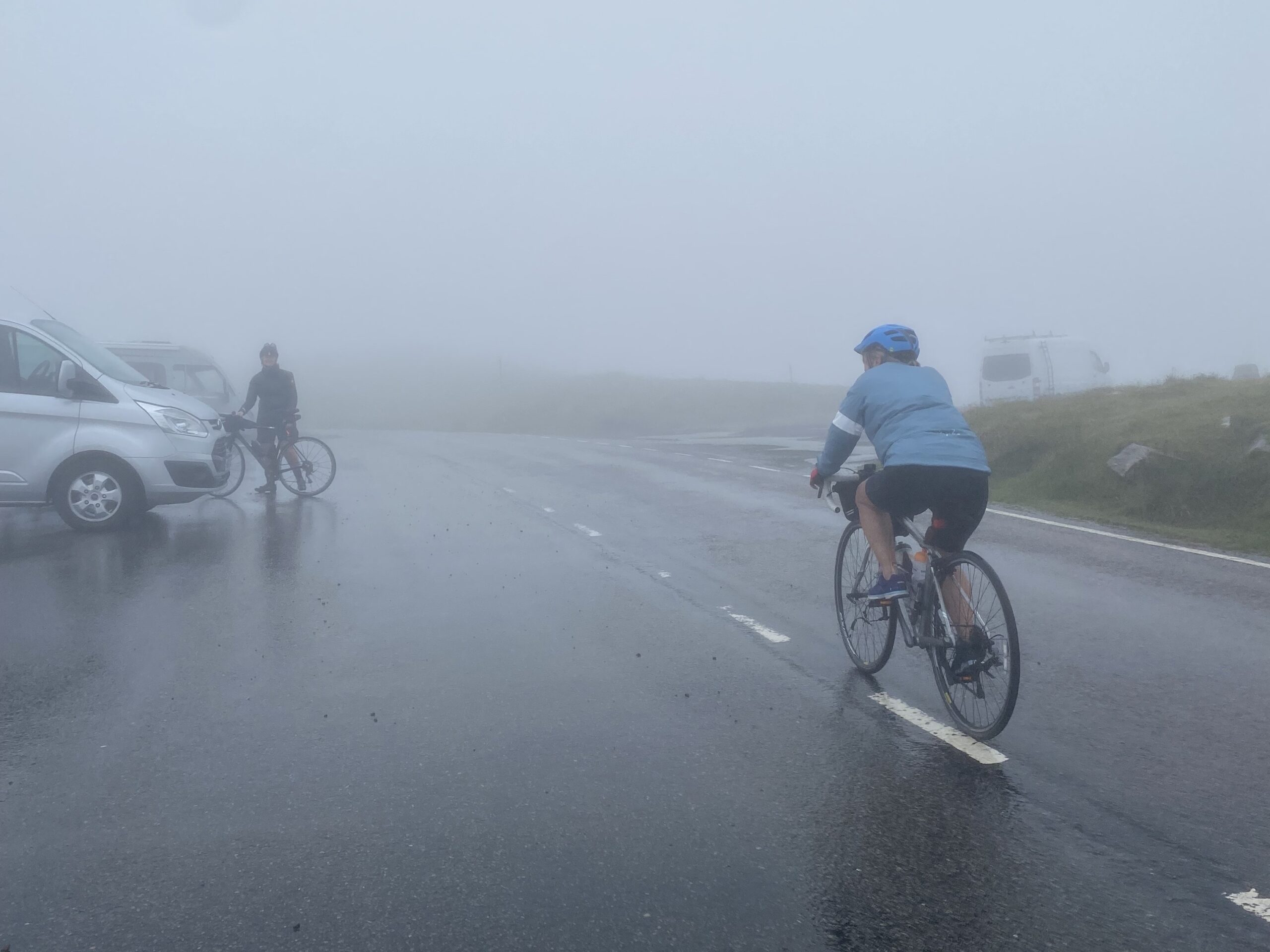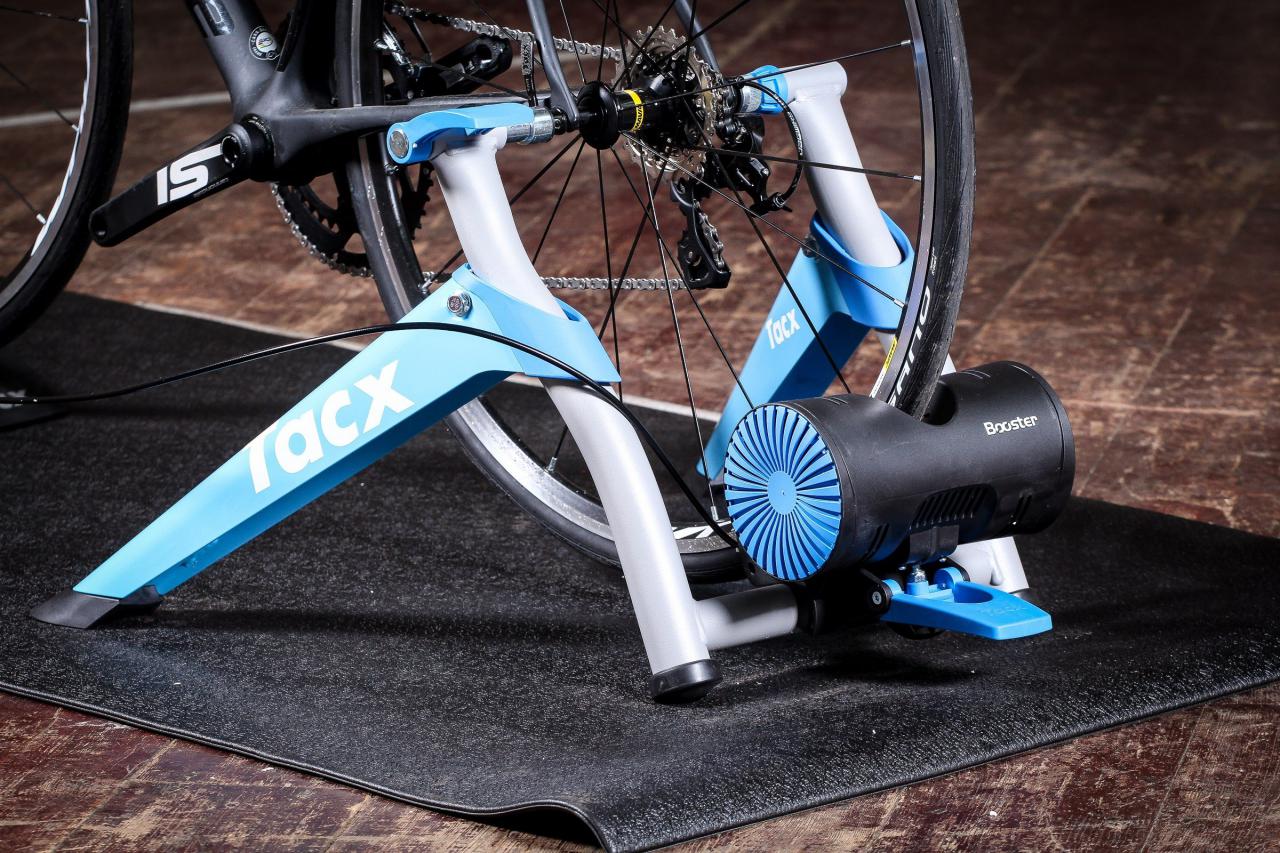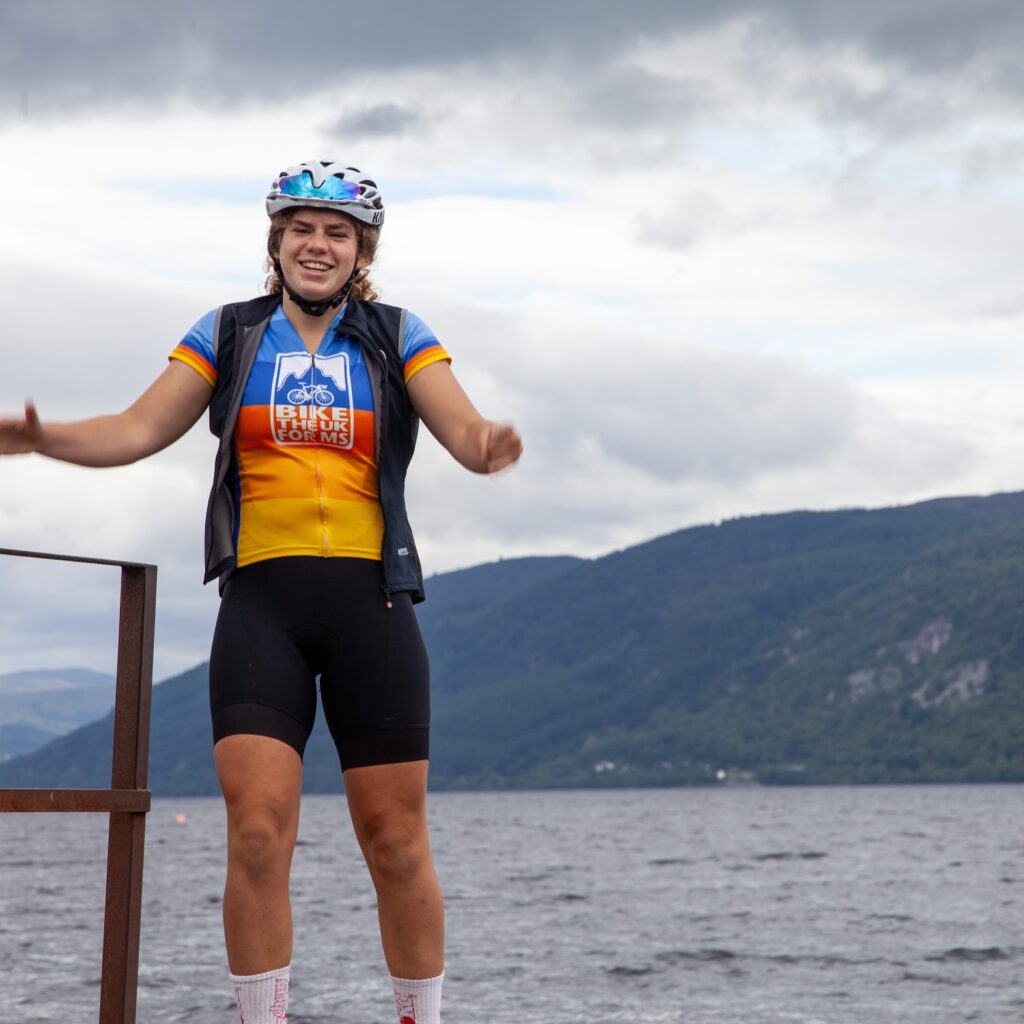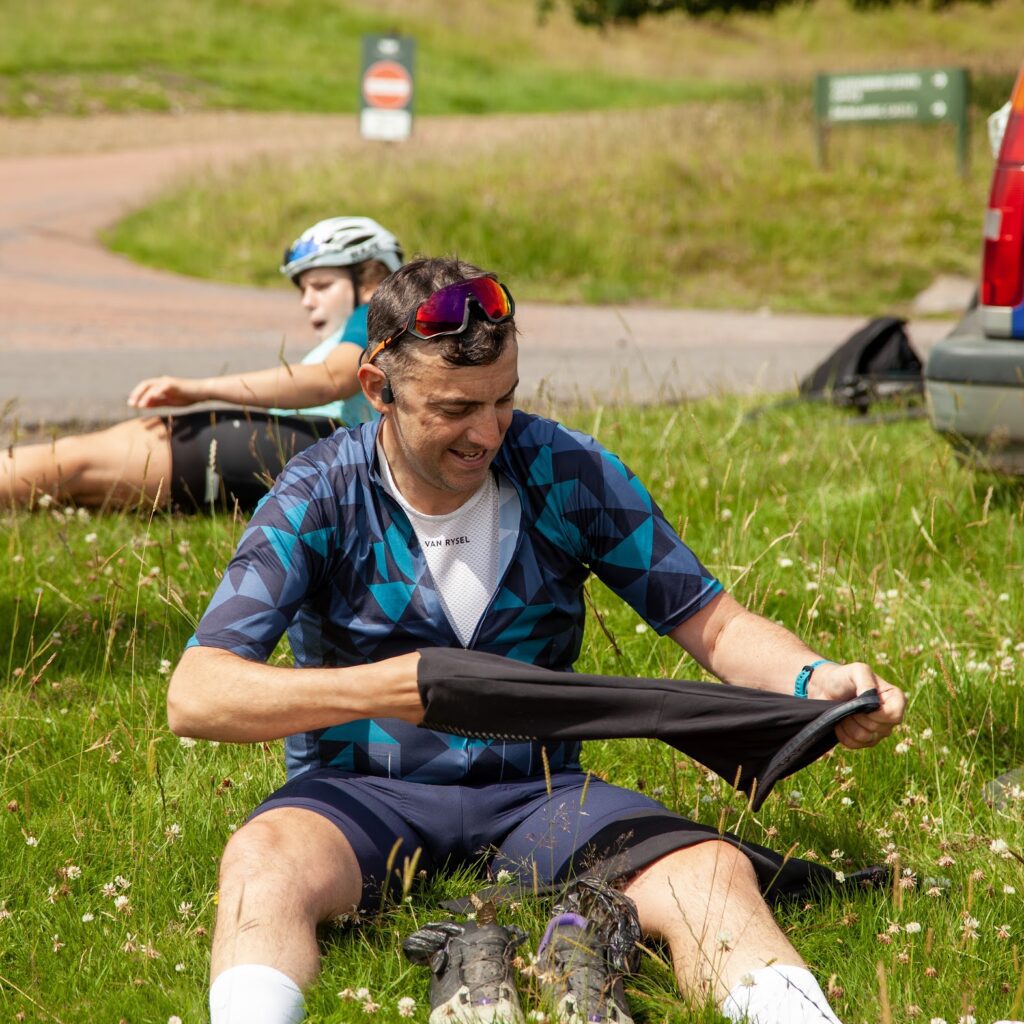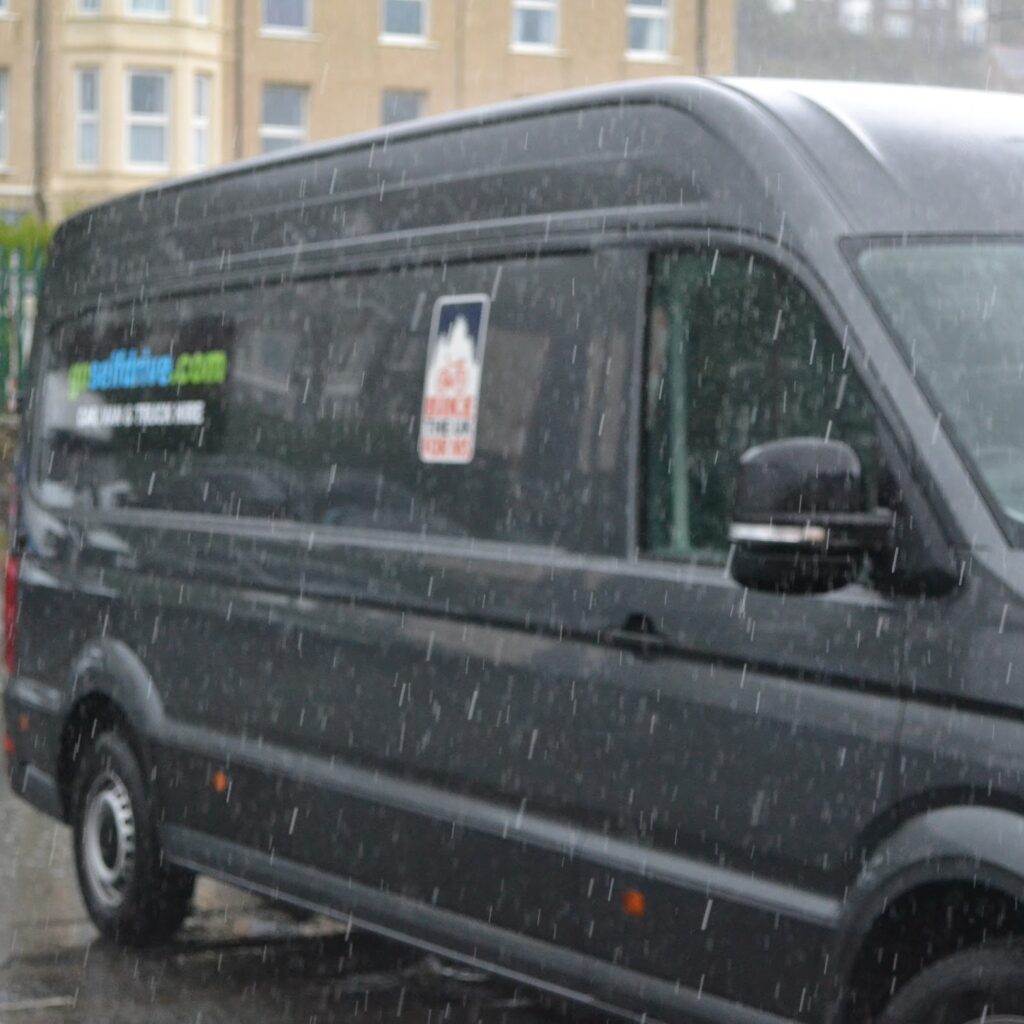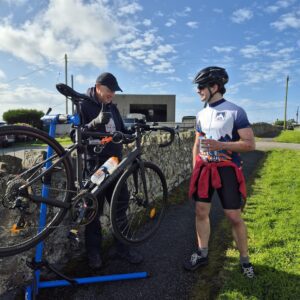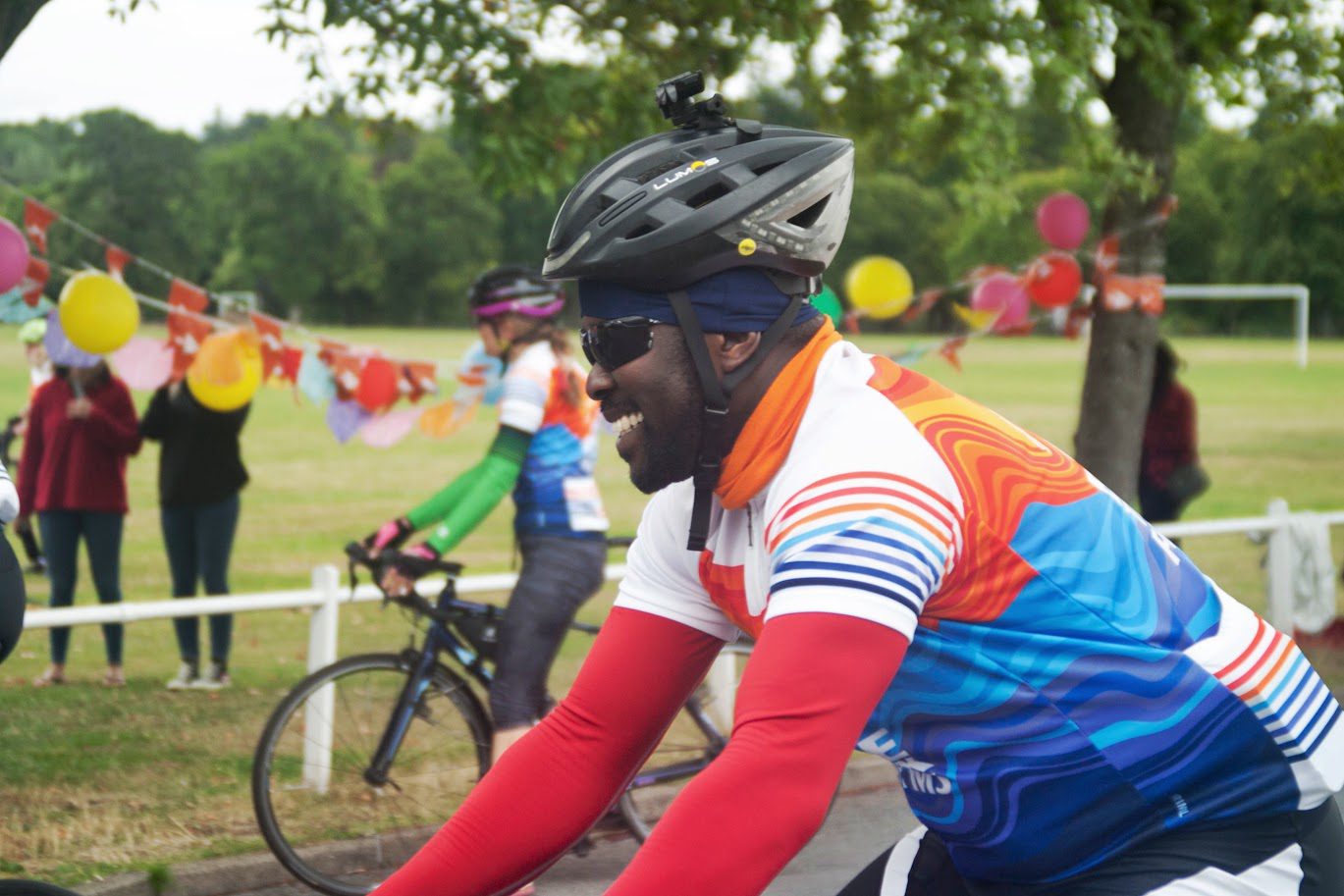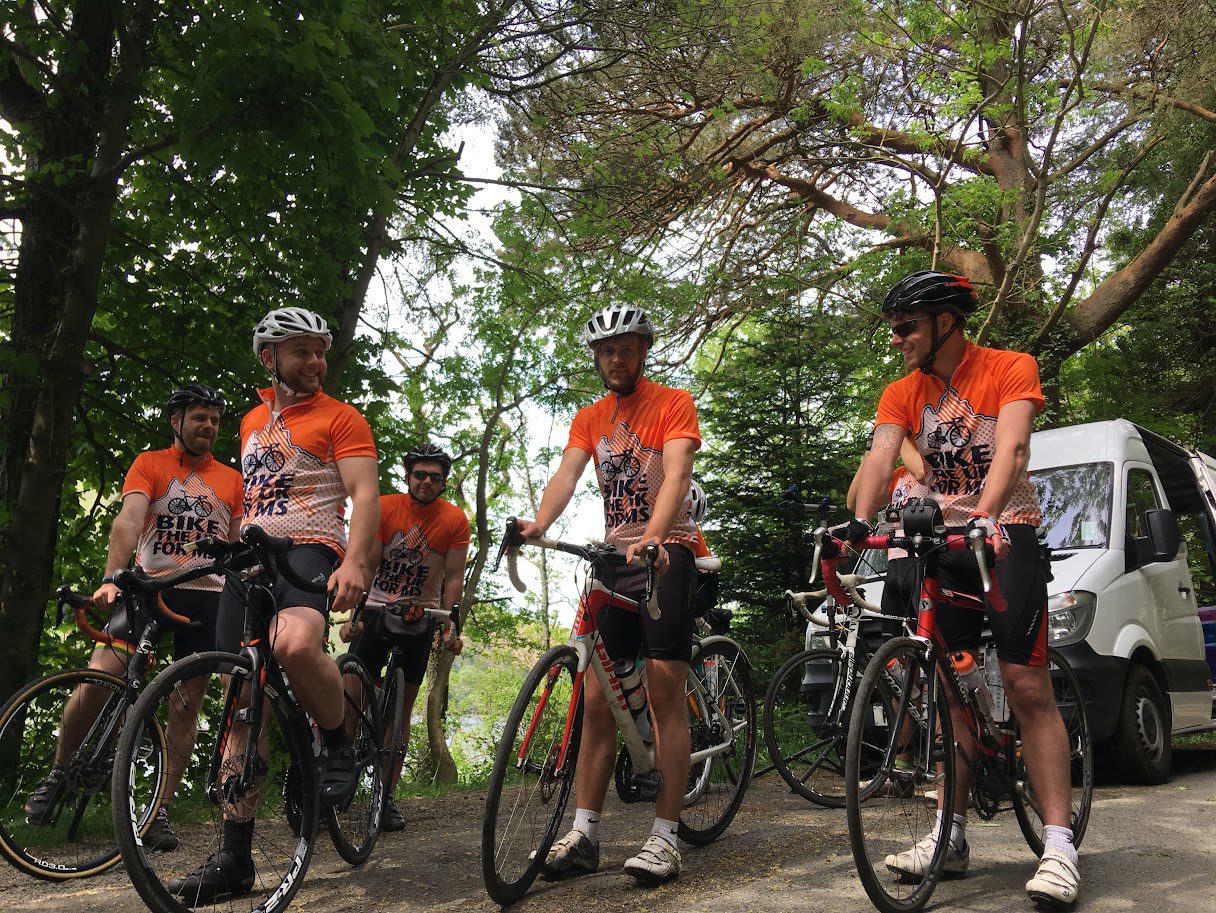When camping on a Bike the UK for MS trip such as Land’s End to John O’Groats, it is essential to make sure you have the correct equipment and follow the camping tips below to ensure you have the best time.
Camping not for you? The Scottish Highland’s Bike Tour is a hotel’s only trip, or you can register your interest for a hotels accommodation option on the sign-up forms of the North Coast 500, King Alfred’s Way, Coast to Coast and Lon Las Cymru.
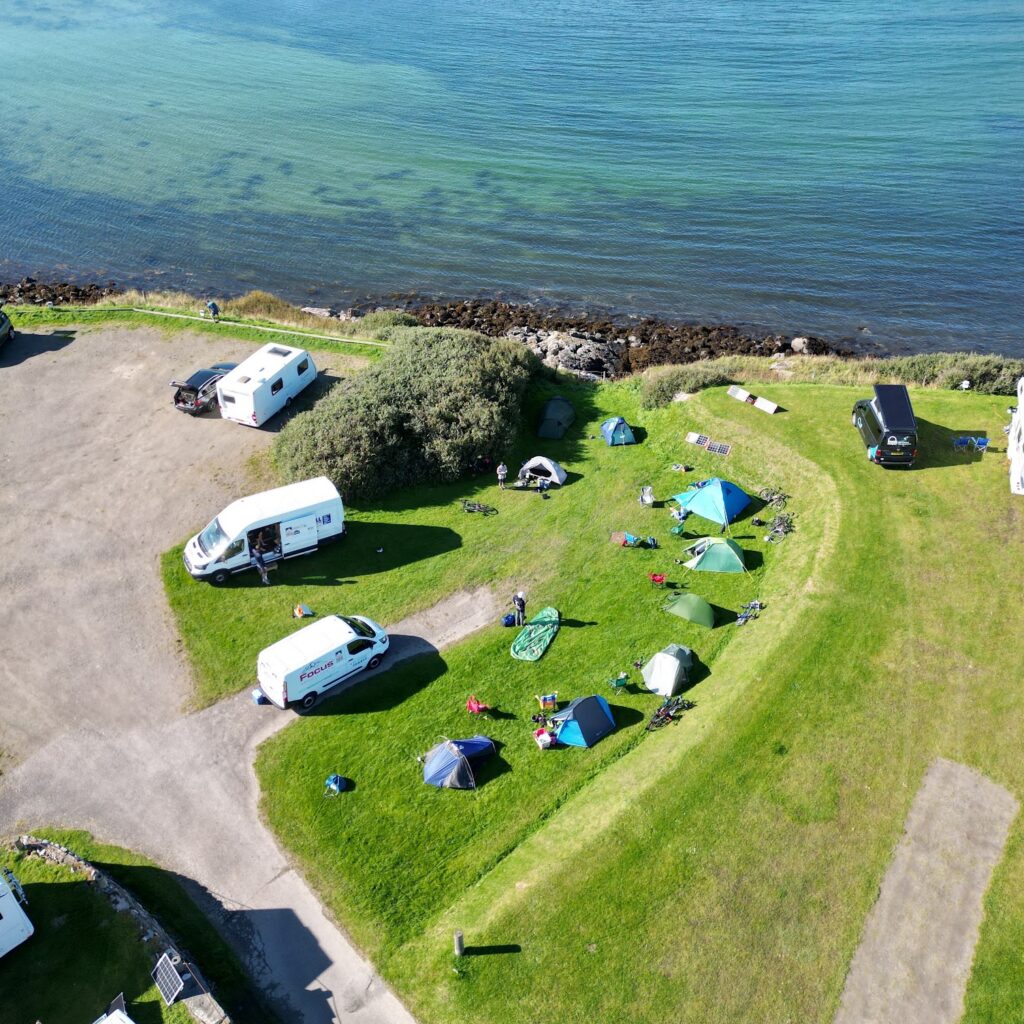
The 5 Dos
1. Test Your Tent!
Before you take on a Bike the UK for MS challenge it is essential to put up your tent. Whether it’s brand new or a trustworthy veteran of camping, the last thing you want to do is struggle to set up your tent after a hard days riding. Putting your tent up before going allows you to be confident in setting up your camping accommodation for the night on our trips as well as notice any damages or missing parts. Some of our trips, such as the North Coast 500 are in remote locations, therefore it won’t be the easiest to find a replacement – make sure everything is in good condition before trekking across the country to start your cycle challenge.
2. Test your Air Mattress
The Second camping tip applies if you are bringing an air bed. Firstly double check you have a way to pump it up when on our trip. Our support vehicles can help with a cigarette lighter or plug power source from our Jackery portable power supply but remember the pump and mattress must fit in your 80 litre Box. Once you have it inflated, test it can stand the test of time. The last thing you want is a poor night’s sleep before a day of riding because your mattress has deflated in the night. Of course, you can choose to bring a sleeping mat instead to mitigate these circumstances completely, that is a personal preference.
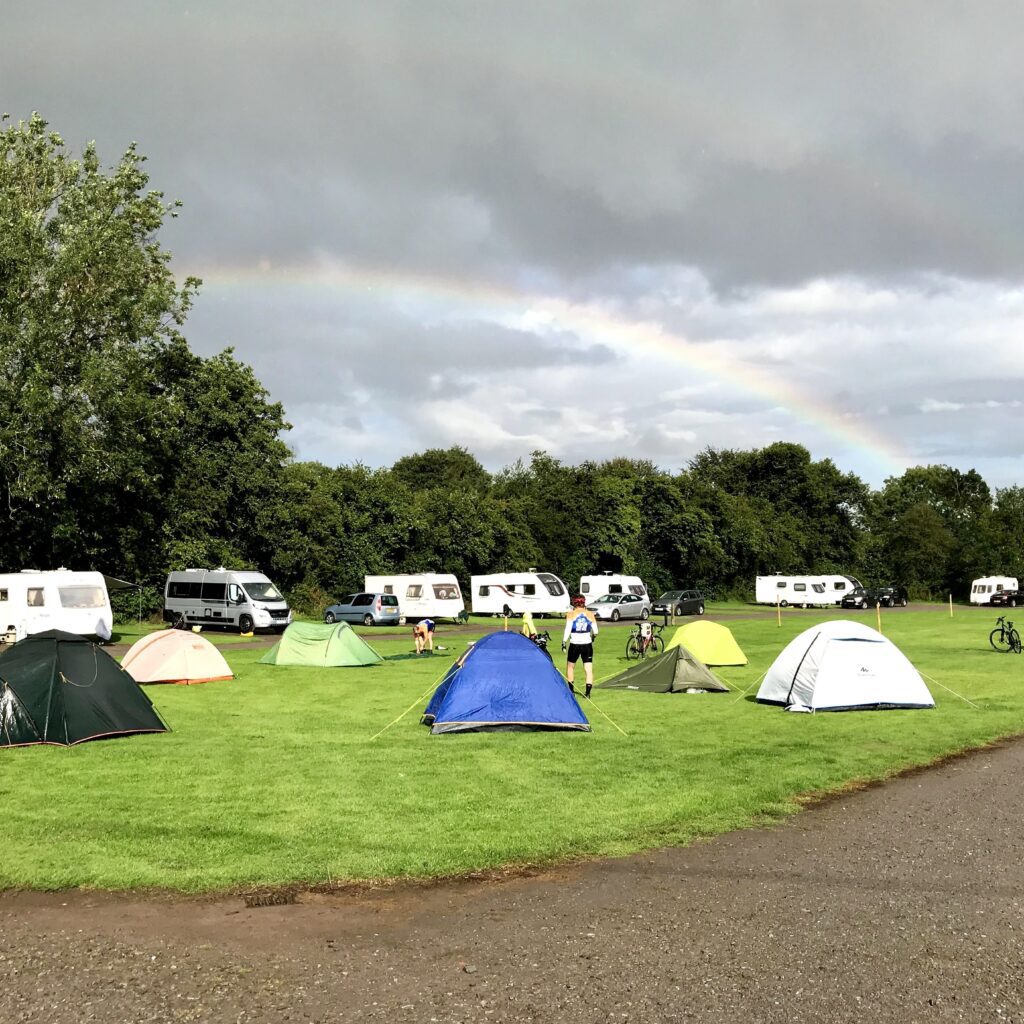
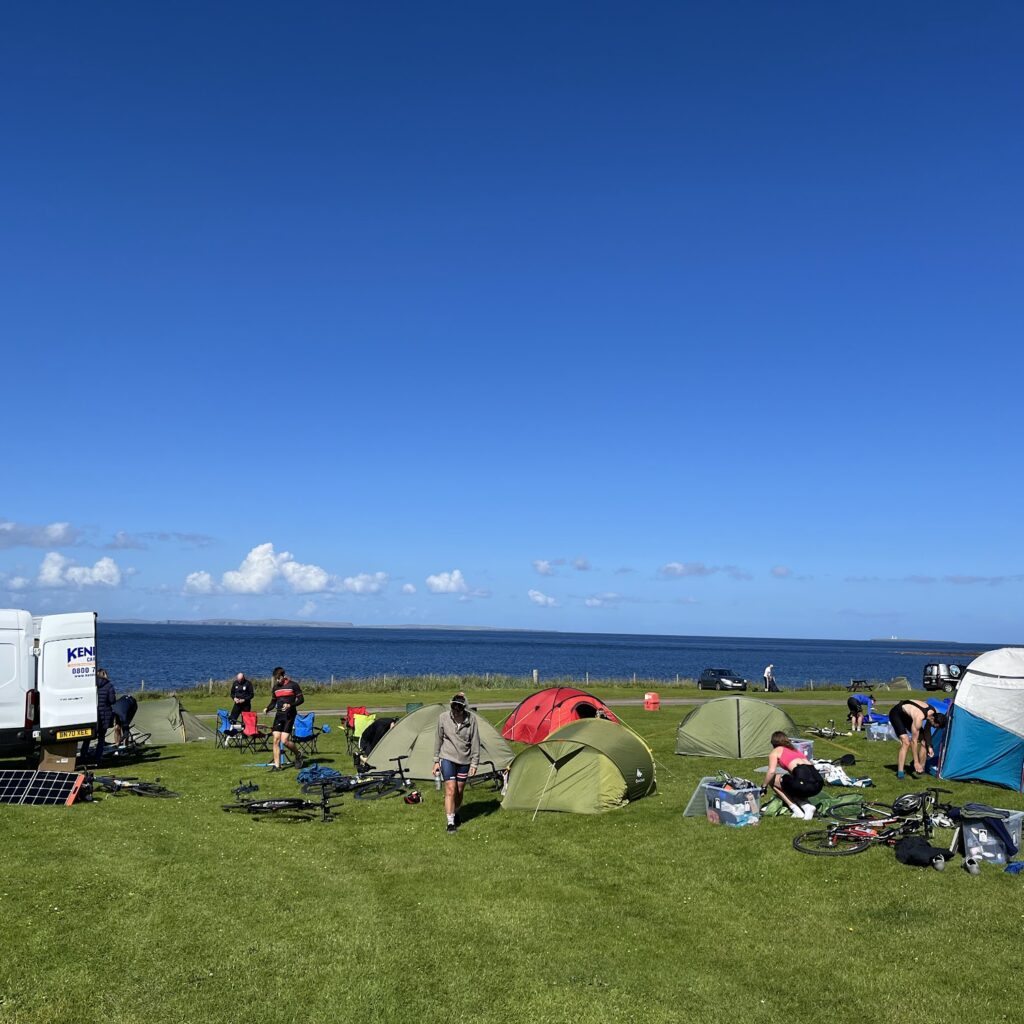
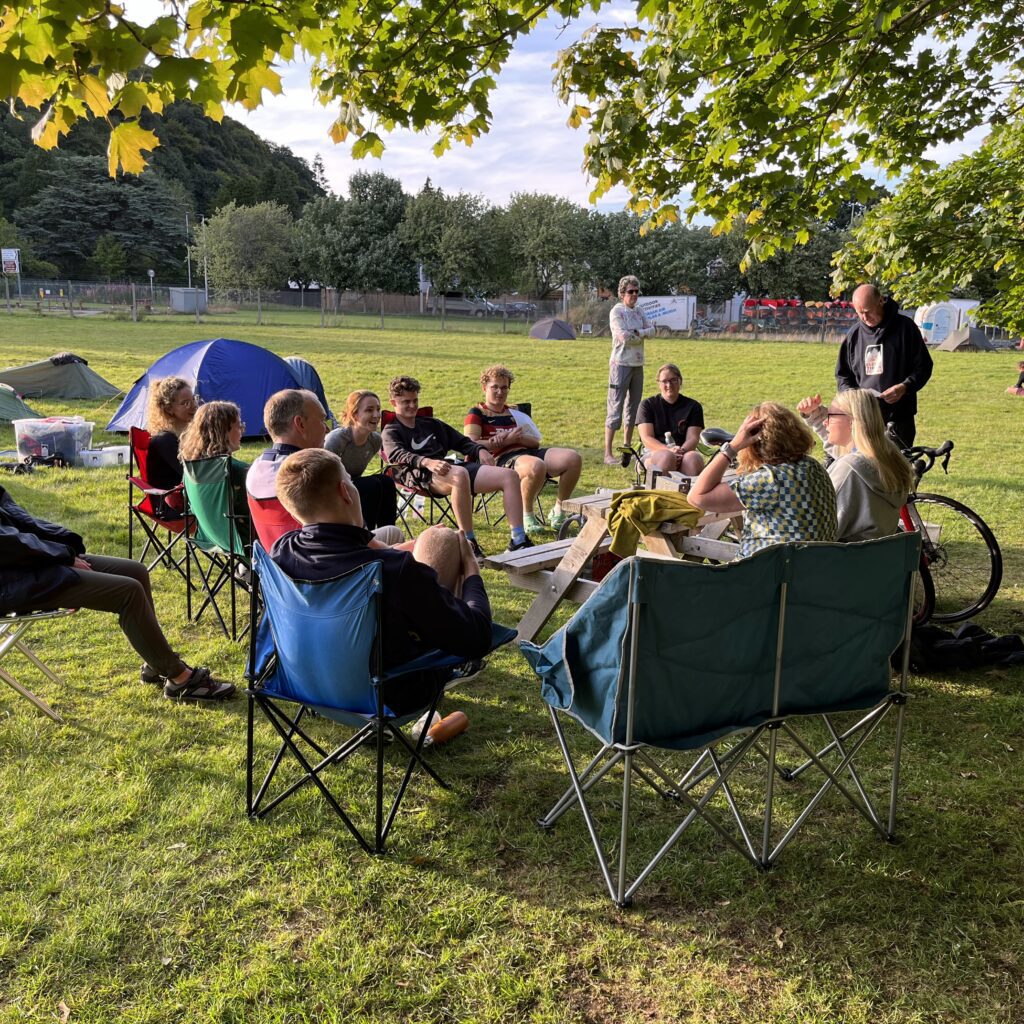
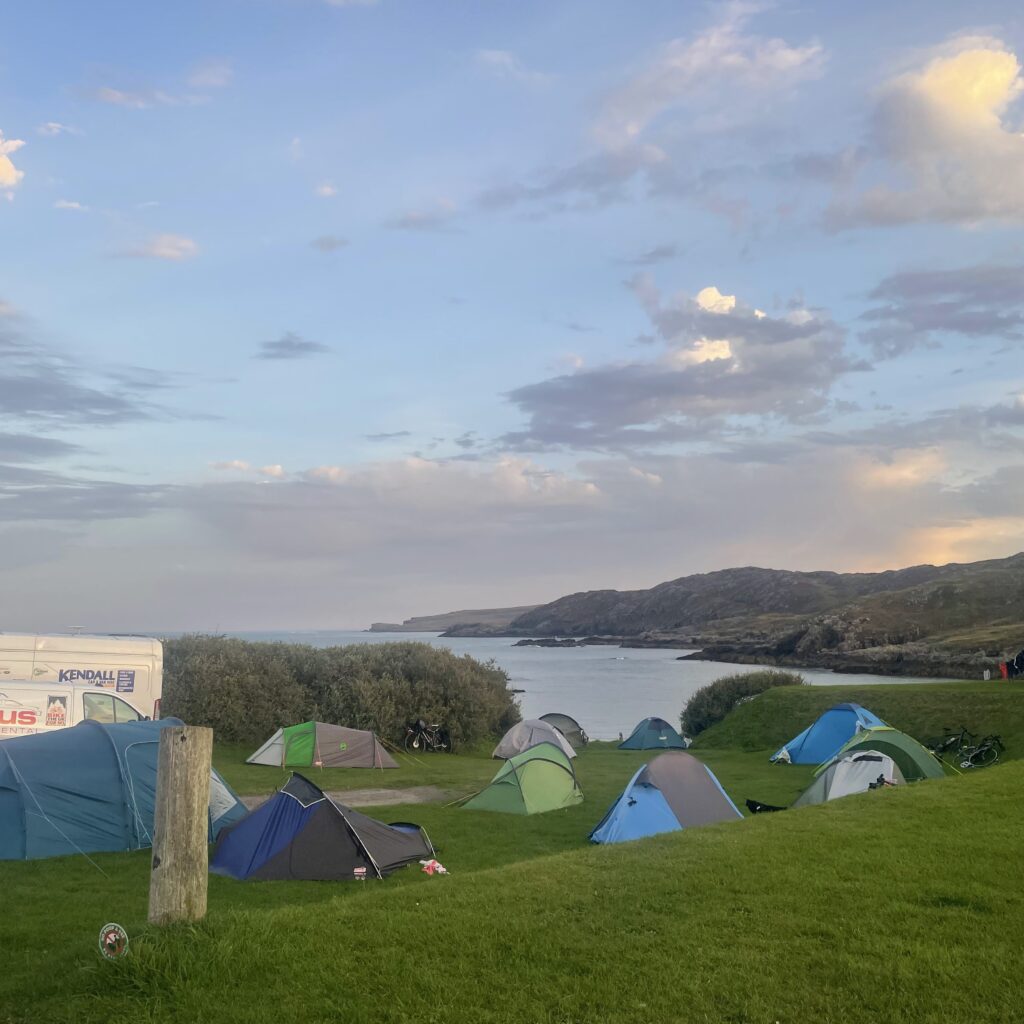
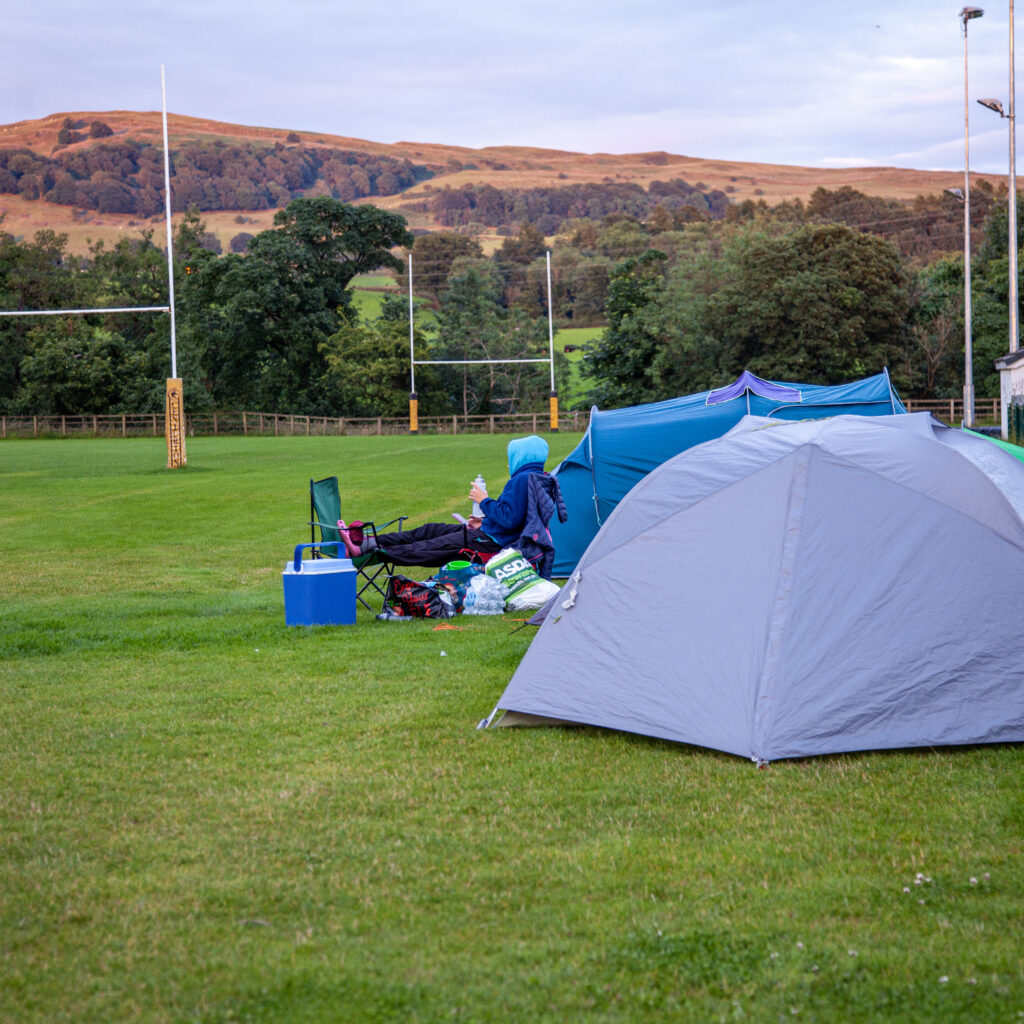
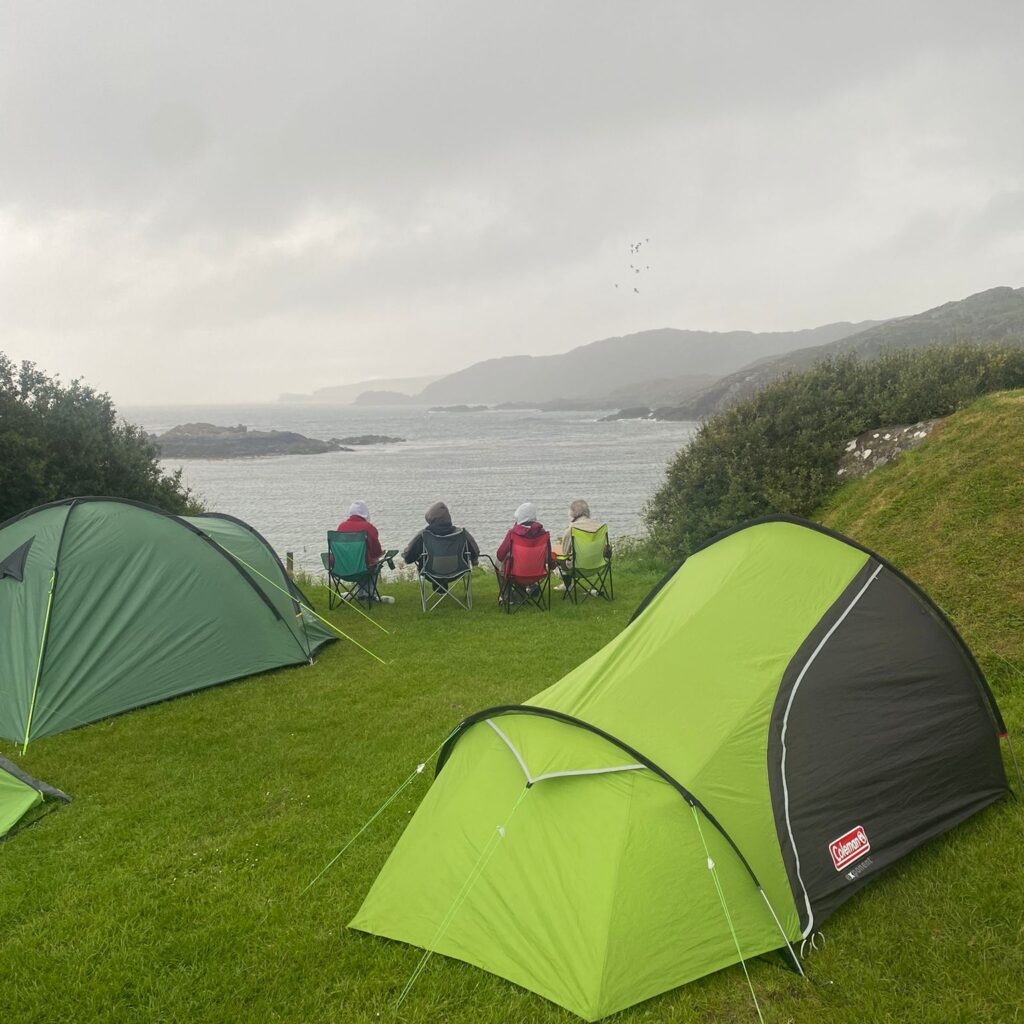
3. Bring a full set of tent pegs
Although items such as tent pegs should be included with your tent, and an item to be checking when testing your tent, it gets a special mention on this list as having no or very few tent pegs has been a common theme on our trips over the years. Firstly, make sure you have a full set of tent pegs as you will be setting up your tent many times in different locations – it is easy to lose a few pegs on the journey so don’t be short on them to begin with. Although we time our trips in the Summer to try and have the best weather to ride in, sometimes the UK has other ideas. The wind in the highlands can get seriously strong by the coast so make sure there’s enough tent pegs for the guide ropes too.
4. Plan your meals
When cycling across the UK, some overnight stops can be very rural, therefore you must plan your meals, especially dinner and breakfast. You Can view information packs with details of the accommodation locations and the amenities around them as well as rest stops throughout the day so you can plan your meals. A supported cycle means you don’t have to worry about the weight of your shopping so you can plan way in advance if you like. Some people choose to bring cooking equipment to make their own meals at camp, whilst others rely on takeaways and microwaves at campsites – this is a personal preference in which you can make an informed decision based on the information packs.
5. Dry your tent after the trip
After a long and hard Bike the UK for MS cycling challenge, you may want to come home and rest, and maybe not want to think about putting your tent up for a while, but if it was raining or there was dew on your tent on the last night of camping, you will want to set it up again to dry off. Not only will it keep your tent in a good condition for future use, but it will save you from a not so pleasant experience the next time you want to go camping – this can be said from personal experience!
The 5 Don'ts
1. Don’t bring a festival tent
Bike the UK for MS run supported cycling trips, meaning you don’t have to carry your camping equipment as you cycle. Therefore you don’t need to have the lightest or most expensive camping gear to join one of our cycling challenges. However, you still want to stay dry throughout the night and with the British weather that means a festival tent probably won’t do that for you. Make sure to bring a trustworthy, double skinned waterproof tent to ensure the camping doesn’t dampen your spirits.
2. Don’t forget about clothes for Camping
When packing, your thoughts may be on what to pack when it comes to cycling gear but remember you will also need to pack clothes (and shoes!) to wear when camping. These are clothes that will need to keep you warm during dinner and before you are ready to settle down in your tent for bed. A great item that doesn’t take up too much space is sliders or flip flops. These are great for in the night if you need the toilet or for walking to go to the showers. Speaking of showers – do not forget a towel! This is a staple item for after a hard day’s riding and has been a forgotten item before.
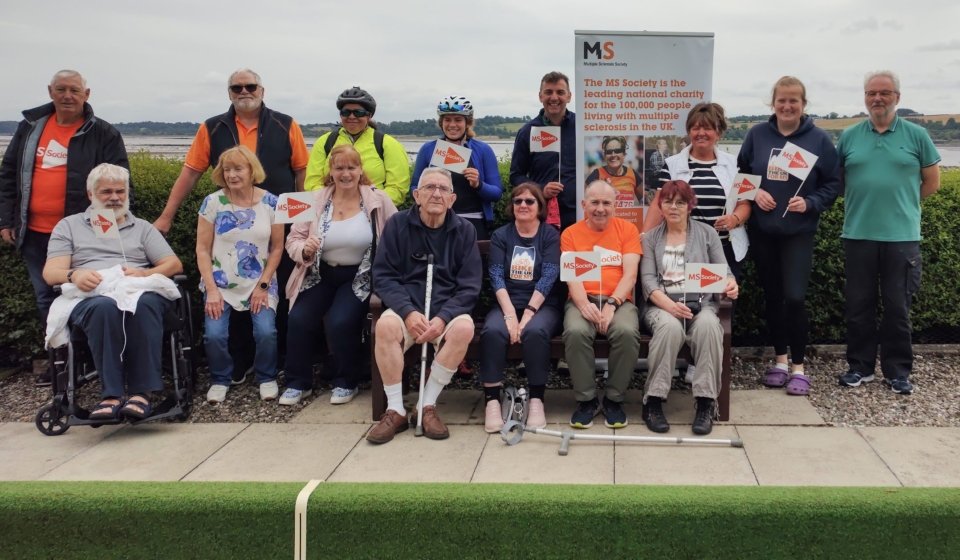
Meeting Dumbarton MS Society
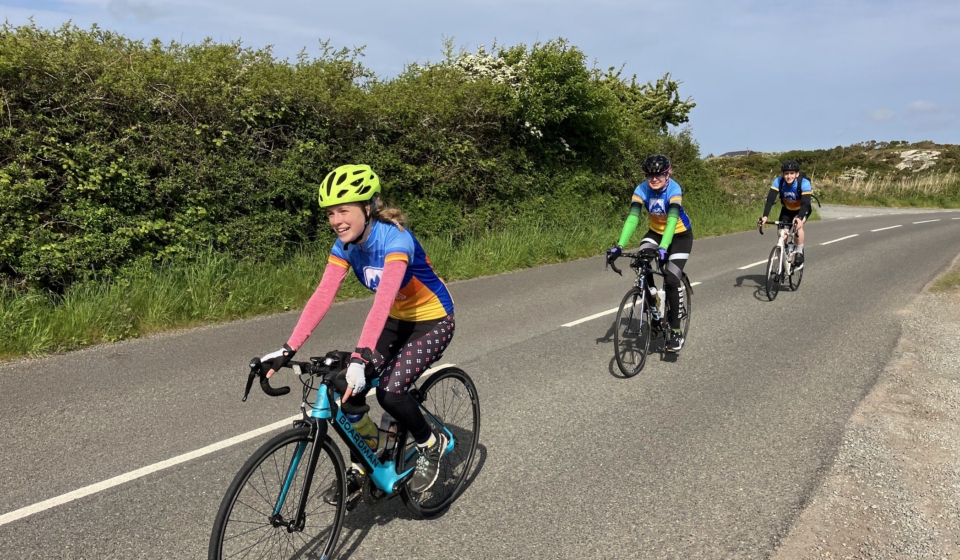
Cycling Lon Las Cymru
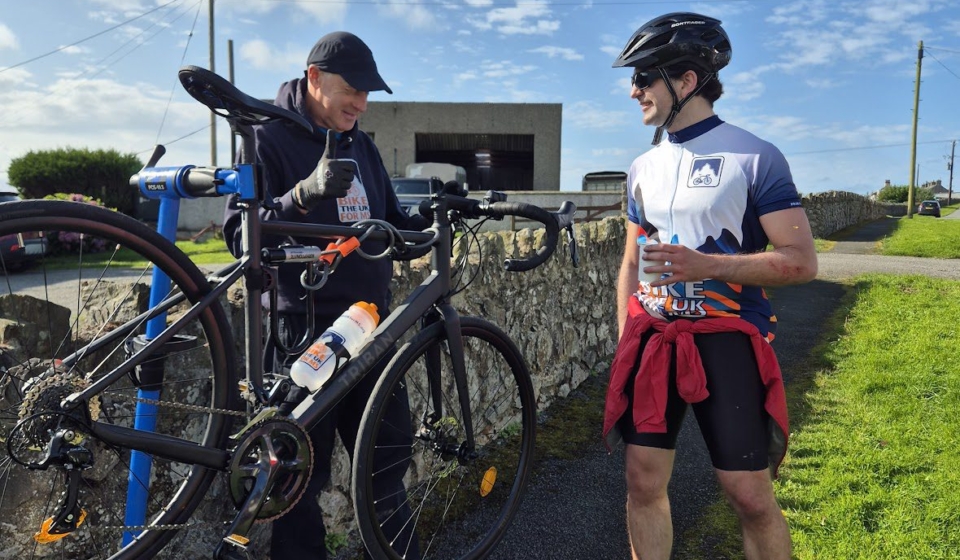
Mechanical Support on Lon Las Cymru
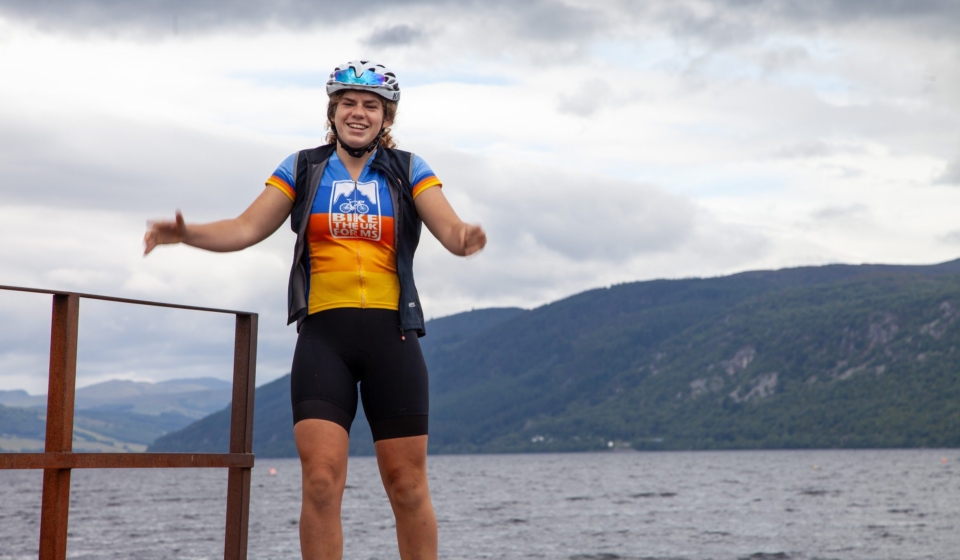
Land’s End to John O’Groats
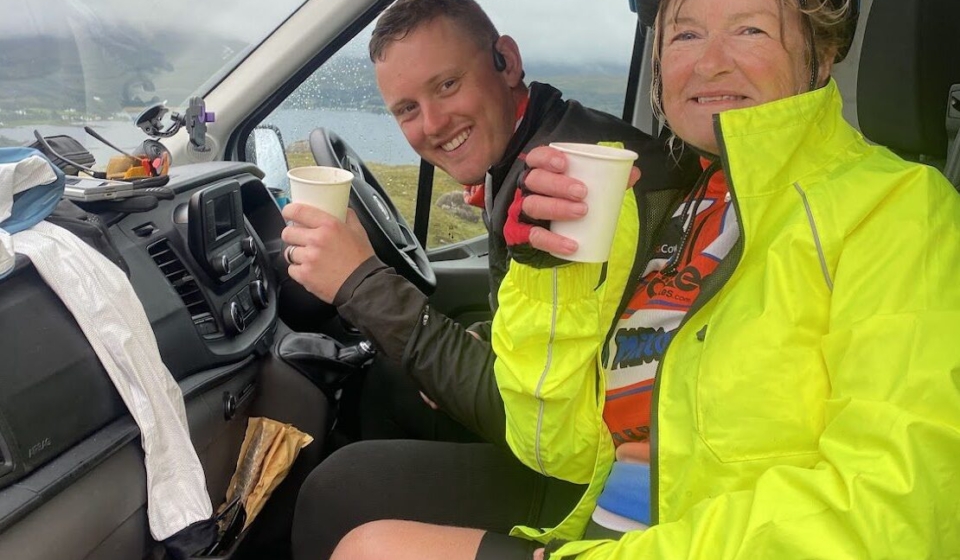
NC500 2024 – Keeping dry in the Support Vehicles
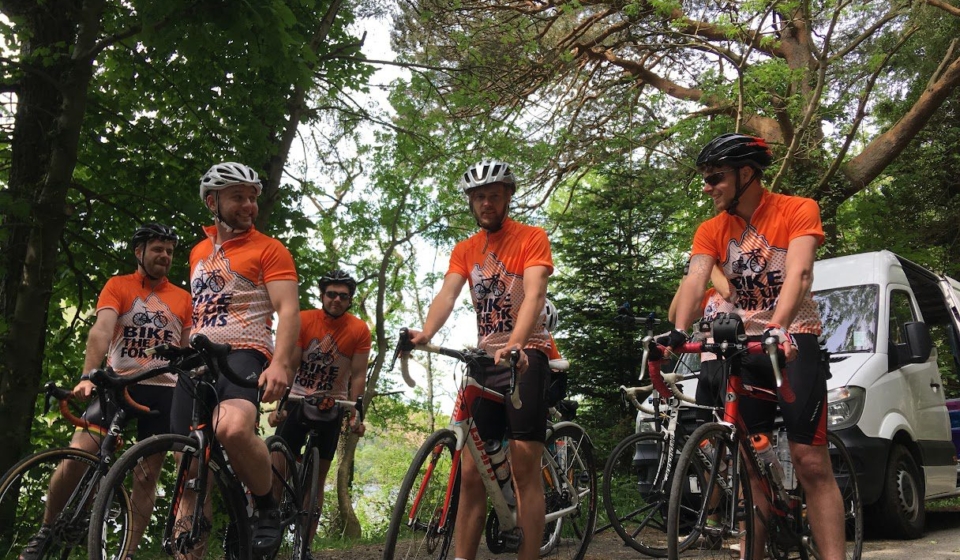
Exploring 3 days of Coast to Coast
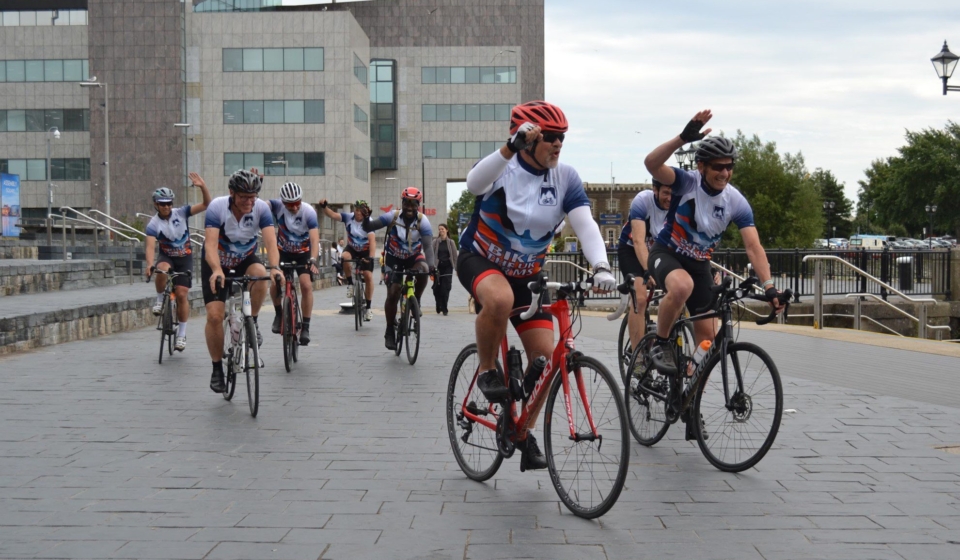
Cycling into Cardiff Bay 2024
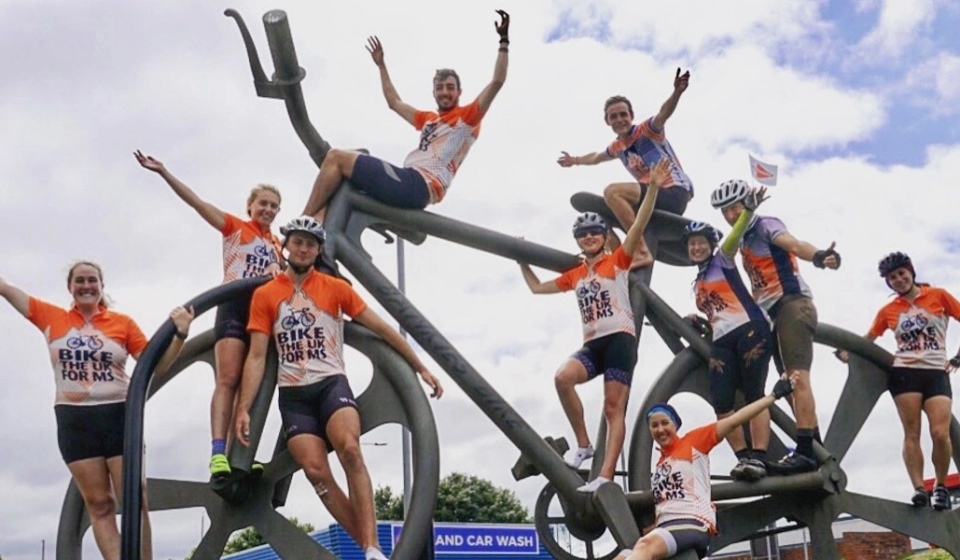
Reaching Glasgow while tackling LEJOG
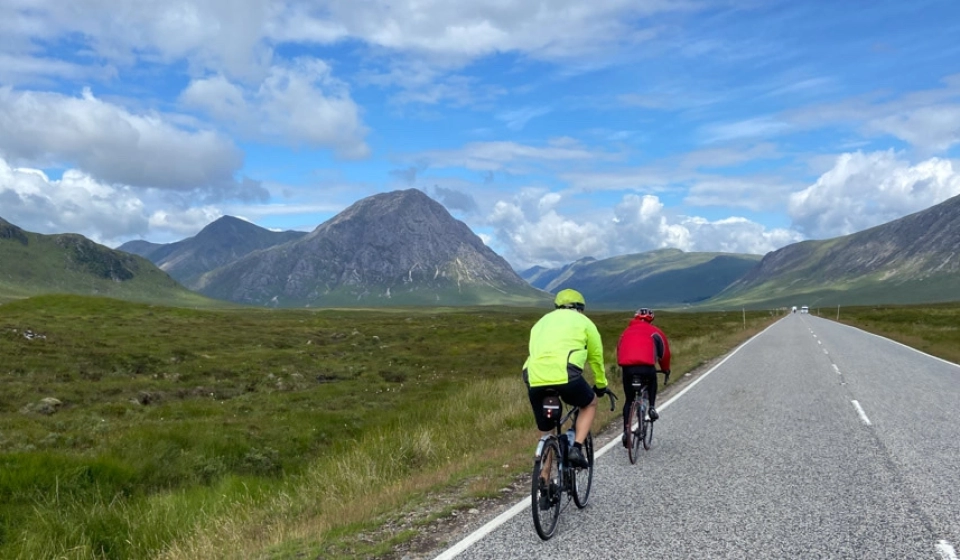
The beautiful scenery of LEJOG
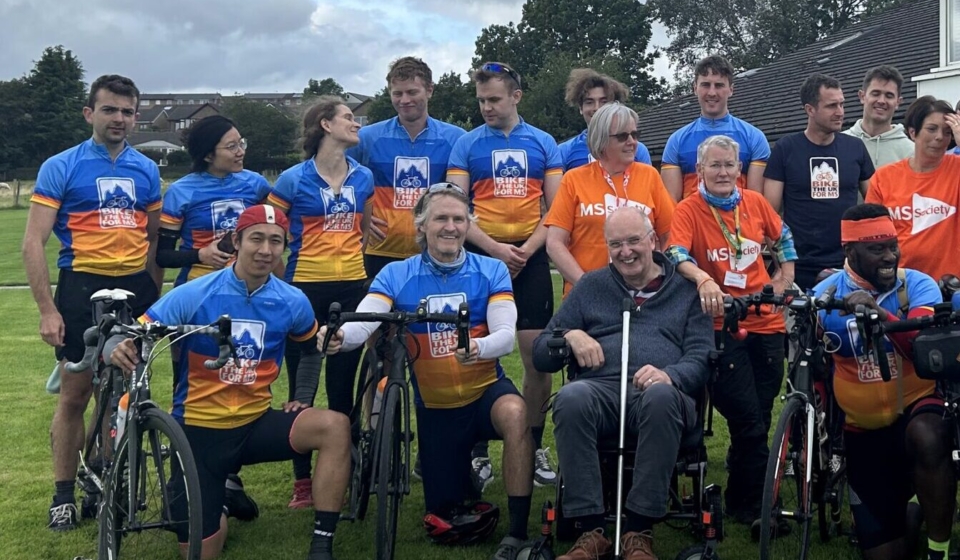
Meeting Our C2C team meeting East Cumbria MS Society
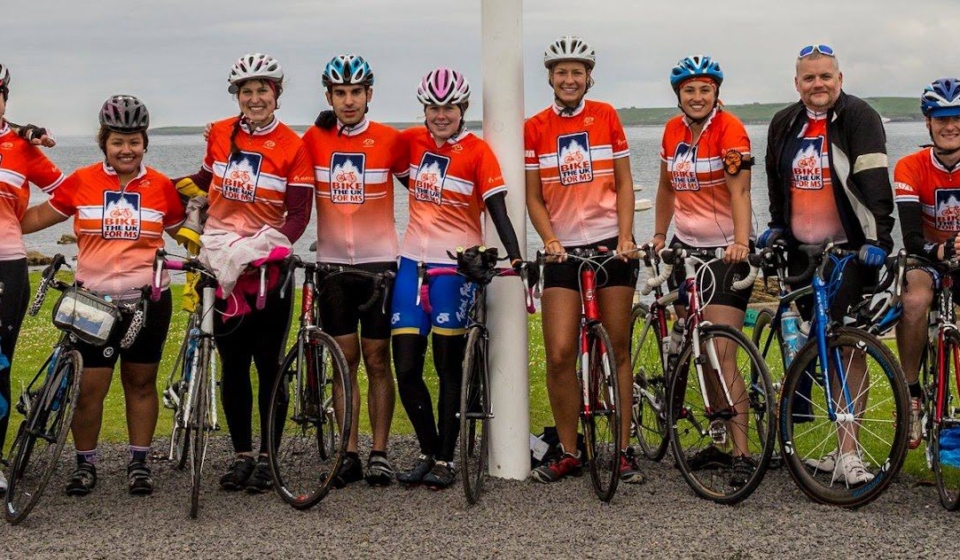
Our Inaugural 2014 team setting off from Lands End
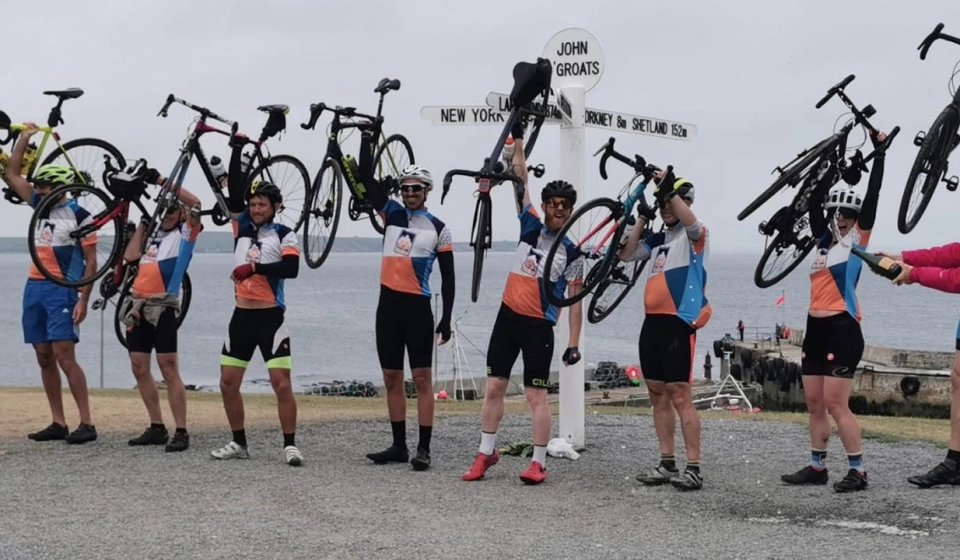
John O’Groats Celebrations
3. Don’t leave camping necessities in the van overnight
This is a Bike the UK for MS specific camping tip. The support vans that carry your equipment throughout the day will be locked overnight to ensure your belongings are as safe as possible. Although our route leaders are there to support you as much as they can, a midnight visit to ask for your pillow out of the van may not be appreciated. Our route leaders will try to keep the vans open for as long as possible and will let everyone know when they are about to lock the van for the night so make sure you have everything you need for the night already in your tent. At least one of the route leaders will also be up early to unlock the van for anything you need in the morning so you don’t have to take everything out of the van the night before.
4. Don’t leave items outside your tent
Leaving items such as your towel or trainers outside overnight can be easily done, but if it rains overnight, you’ll soon know about it when you go to put your shoes on in the morning. We would never recommend leaving your items outside unattended during the night even if the weather is nice, but for items such as towels or damp clothes, our camping tip would be to hang them protected in the van before getting them out in the morning to dry off better.
5. Don’t leave a mess behind
We are lucky to have many camp sites and communities support our cause by donating their space and amenities to us for little or no cost to maximise the amount of money donated to those living with MS. We want to keep and build these relationships as we have done in previous years to make sure all your hard work is going towards a great cause. This is why our final camping tip is to leave the place we have stayed cleaner than we found it; and that is a lot easier to do when we all work together to clean our own camping areas and personal mess.
Did you find these camping tips helpful? Read more of our training and top tips blogs here.
Want to join us for an unforgettable cycling challenge across the UK? Join us one of our trips here!



